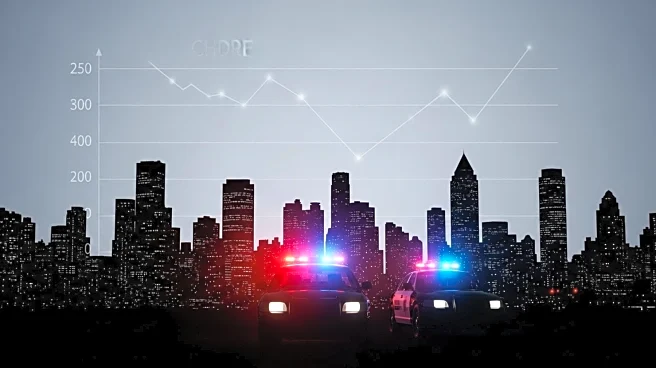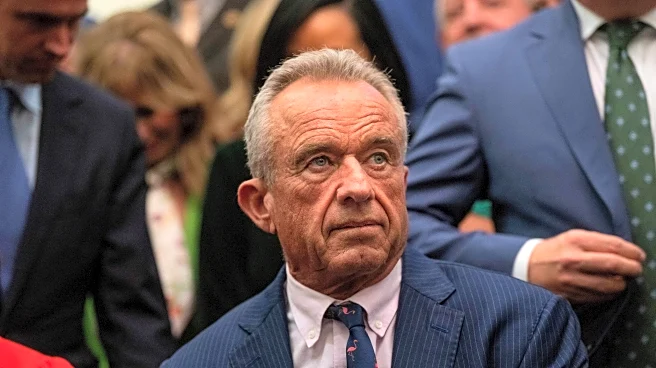What's Happening?
President Trump has labeled Chicago as 'the most dangerous city in the world' and has threatened to deploy national guard units to address violence there. Despite these claims, recent data indicates that violent crime rates in major U.S. cities, including Chicago, have been decreasing significantly over the past two years. The FBI reported a national homicide rate of 4.6 per 100,000 residents in 2024, marking the lowest figure since 2014. Chicago's homicide rate was 17.5 per 100,000 residents in 2024, ranking it 37th among U.S. cities with populations over 50,000. The city is expected to see further declines in violence, with projections for 2025 indicating a rate of about 15 per 100,000 residents. This trend is part of a broader decrease in violent crime across the nation, attributed to various anti-violence programs and initiatives.
Why It's Important?
The decline in violent crime rates across major U.S. cities is significant for public safety and urban policy. It challenges President Trump's narrative focusing on crime in Democratic-led cities, as data shows higher murder rates in Republican-led states. This discrepancy highlights the political dimensions of crime reporting and the potential impact of federal intervention in local policing. The reduction in violence also reflects the effectiveness of anti-violence programs funded by initiatives like the American Rescue Plan, which have been cut under Trump's administration. The broader implications include potential shifts in public perception of urban safety and the role of federal versus local governance in crime prevention.
What's Next?
Chicago and other cities targeted by President Trump may face increased federal scrutiny and potential deployment of national guard units. This could lead to tensions between local and federal authorities, impacting community relations and policing strategies. The ongoing decrease in crime rates may influence future policy decisions regarding funding for anti-violence programs and the allocation of resources for public safety. Stakeholders, including local governments and civil society groups, may advocate for continued support of successful initiatives to maintain the downward trend in violence.
Beyond the Headlines
The focus on crime rates in specific cities raises questions about the politicization of crime data and its use in shaping public policy. Ethical considerations arise regarding the deployment of military forces in civilian areas and the potential consequences for civil liberties. The long-term impact of reduced violence could lead to shifts in urban demographics, economic development, and community trust in law enforcement. These factors may influence broader societal changes and the future of urban planning and governance.













